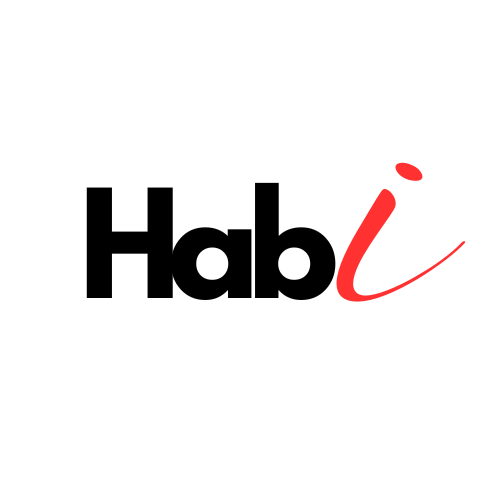Search Engine Optimization (SEO) is a vital component of digital marketing that helps improve your website’s visibility in search engine results. In this comprehensive guide, we’ll explore essential SEO strategies and best practices that businesses can use to enhance their search engine rankings, attract more traffic, and achieve their digital marketing goals.
SEO Fundamentals
What is SEO?
SEO is the process of optimizing your website to improve its visibility in search engine results for relevant keywords. The ultimate goal is to increase organic traffic by aligning your website’s content and structure with the search engine’s ranking factors.
Why SEO is Important?
SEO is crucial for any business aiming to gain online visibility. Appearing on the first page of search results dramatically increases your chances of getting clicked. In fact, the top organic result gets more than 30% of the clicks, while results on the second page are barely seen.
Understanding Keywords and Search Intent
Head Terms vs. Long-tail Keywords
Choosing the right keywords is one of the most critical steps in an SEO strategy. While head terms (broad keywords) can drive more traffic, long-tail keywords (specific phrases) are easier to rank for and often lead to higher conversion rates.
Competitive Keyword Analysis
Running a competitive keyword analysis helps you identify the terms your competitors are ranking for and determine whether to target long-tail keywords or head terms. This analysis ensures that your keyword strategy aligns with your audience’s search intent and your business objectives.
On-Page SEO Best Practices
Optimizing Title Tags and Meta Descriptions
Your title tag should be under 60 characters to avoid being cut off in search results, and your meta descriptions should be concise yet informative. Both should include target keywords to improve clickthrough rates and search engine visibility.
Using Heading Tags
Heading tags (H1, H2, H3, etc.) provide a hierarchical structure to your page and help both users and search engines understand the content. Ensure that your H1 accurately describes the page’s content, and use subsequent headings to organize subtopics.
Internal Linking for SEO
Creating internal links is critical for navigating users and search engine crawlers through your site. You can improve your website’s internal linking by creating related posts sections, pillar pages, and topic clusters.
Technical SEO Essentials
Structured Data and Rich Snippets
Structured data (like Schema markup) helps search engines understand the content on your page and increases the chances of appearing in rich results, such as reviews or product information. While structured data doesn’t guarantee rich snippets, it significantly improves the likelihood.
The Importance of HTTPS
Having HTTPS encrypts sensitive data and builds user trust. It is also considered a ranking factor by Google, so it’s essential to ensure your website is secure with an HTTPS certificate.
Sitemaps and Crawling
Submitting a sitemap to search engines like Google allows crawlers to understand your site structure and index your pages more effectively. Keeping your sitemap updated ensures search engines can discover new content and changes to existing pages.
Off-Page SEO and Backlinking
The Role of Backlinks in Building Authority
High-quality backlinks from reputable websites can significantly boost your website’s authority and search rankings. Google uses backlinks as a sign of how interesting and valuable others find your content, so earning backlinks is a crucial off-page SEO tactic.
Avoid Over-Optimizing
While it’s essential to optimize for keywords and backlinks, over-optimizing by stuffing keywords or using manipulative link-building practices can trigger penalties from Google. Focus on natural, high-quality content and links.
SEO Metrics and Tracking
Key Performance Indicators (KPIs) to Track
When tracking your SEO progress, focus on important KPIs like:
- Organic Traffic
- Keyword Rankings
- Impressions
- Backlinks
These metrics help you measure the success of your SEO strategy and identify areas for improvement.
Common SEO Misconceptions
SEO is a One-Time Effort
SEO is not a “set it and forget it” process. It requires continuous optimization, content creation, and analysis to stay competitive.
More Backlinks = Better Ranking
While backlinks are important, quality matters more than quantity. A few high-authority backlinks are much more valuable than numerous low-quality links.
Know more
The Importance of Keyword Research in SEO
- Dive deeper into how to conduct keyword research, use keyword tools, and understand search intent. Discuss the differences between head terms and long-tail keywords.
On-Page SEO: Optimizing Title Tags and Meta Descriptions
- A dedicated page on best practices for writing title tags and meta descriptions, with examples of good and bad optimizations.
Understanding Technical SEO: Structured Data, Sitemaps, and HTTPS
- Explore the technical aspects of SEO, such as implementing structured data, the importance of site speed, and how to set up an HTTPS site.
Internal Linking: The Power of Topic Clusters and Pillar Pages
- Discuss how to create topic clusters and pillar pages, and why internal linking is essential for SEO.
The Role of Backlinks in Building SEO Authority
- A guide to earning high-quality backlinks, strategies for link-building outreach, and common pitfalls to avoid.
SEO Metrics: What to Track and Why It Matters
- A detailed post on which metrics to track (organic traffic, bounce rate, conversion rate), how to interpret them, and tools to use for tracking.
Quiz
Test your skill on SEO best practices
Conclusion
SEO is an ongoing process that involves optimizing for keywords, improving technical aspects of your website, and building authority through backlinks. By following these best practices, you can boost your search engine rankings, increase traffic, and ultimately, drive business growth.
